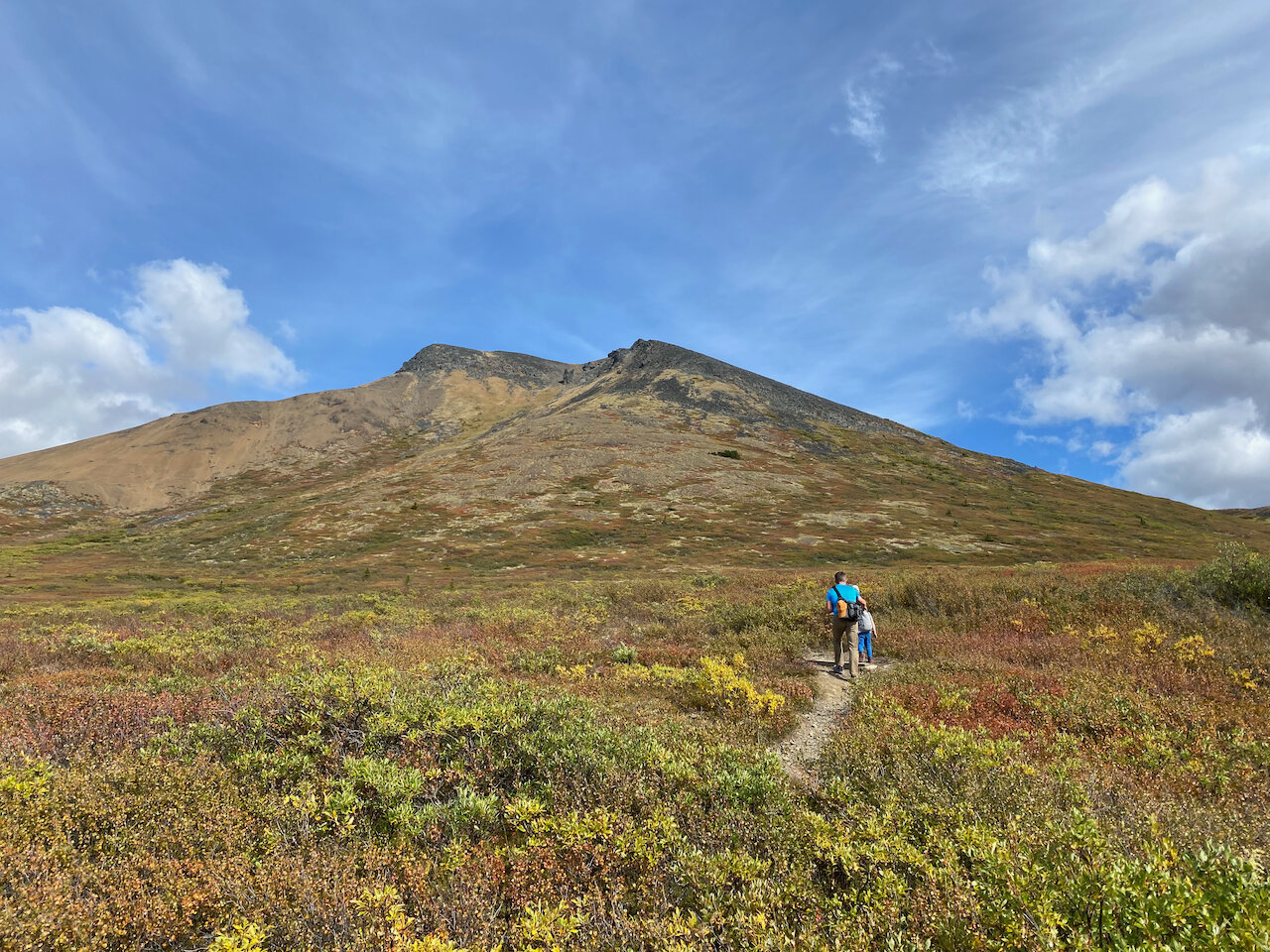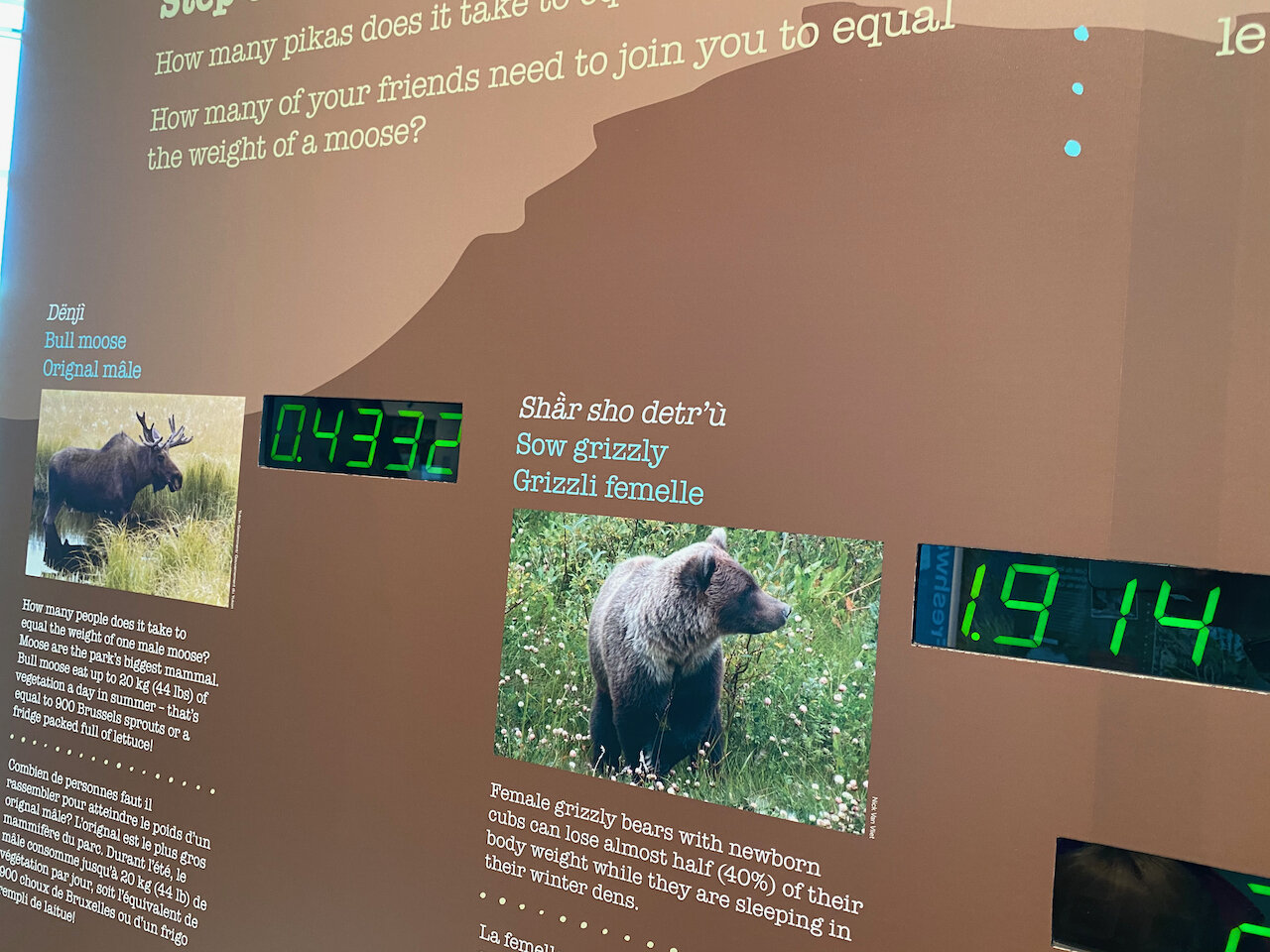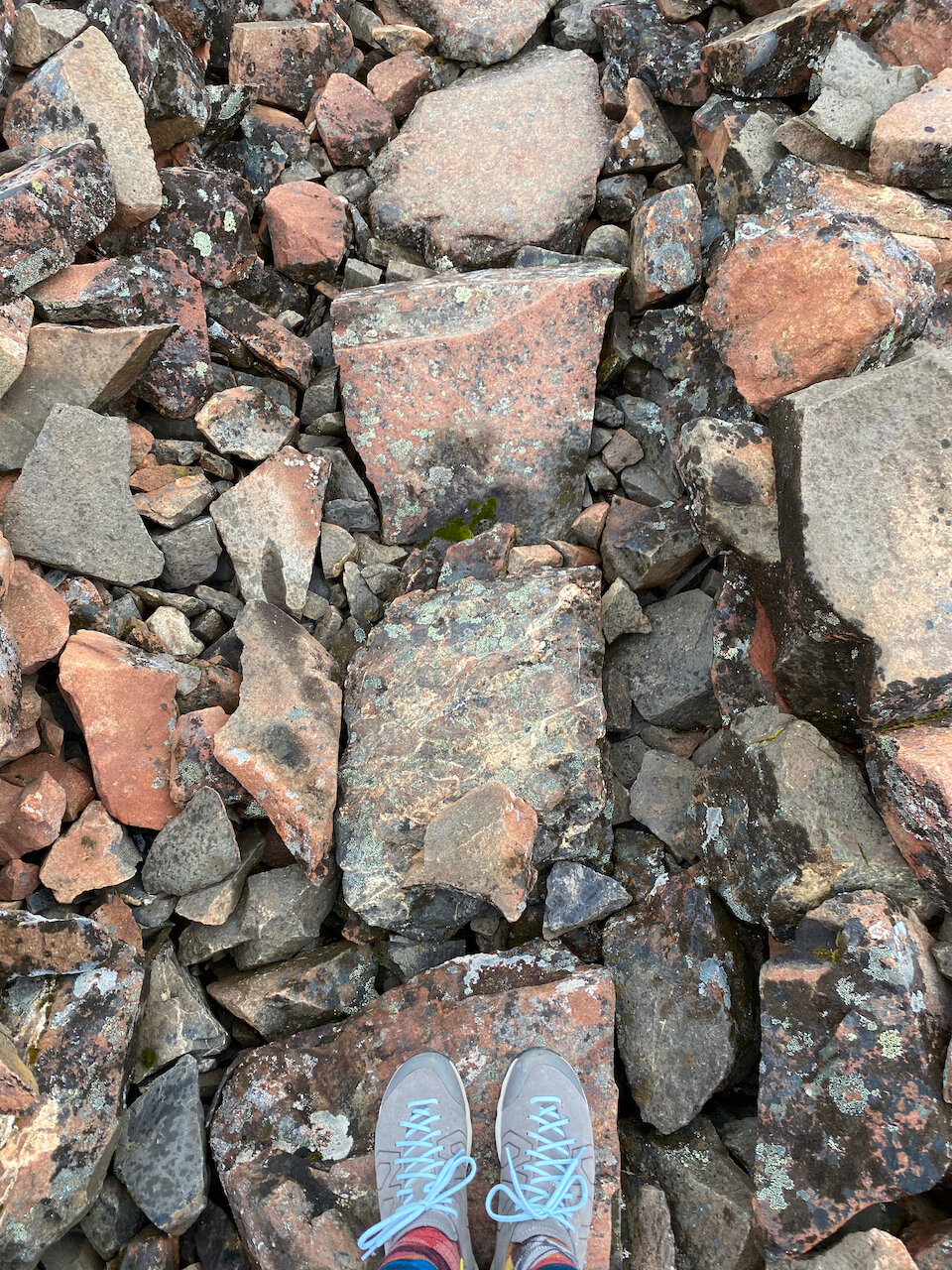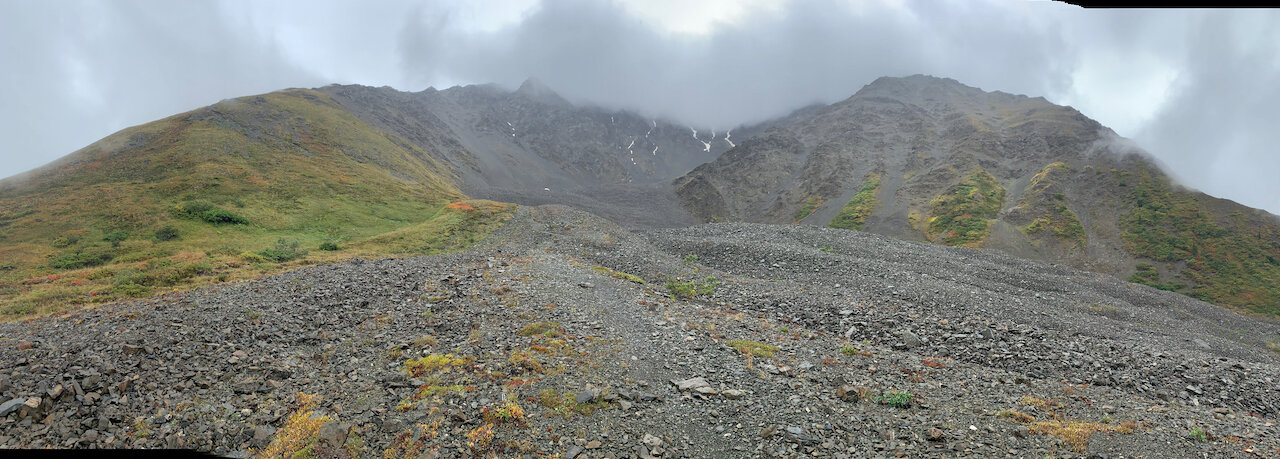There are so many parks in the Yukon and I am sure they are all worth exploring. This post, however, will only cover our experiences camping in two parks: Tombstone Territorial Park and Kluane National Park.
Located 70km north of the Klondike Highway along the Dempster Highway, Tombstone stretches an impressive 2,200 sq km and aims to protect the unique, arctic tundra and wildlife. It boasts rugged peaks, permafrost landforms, and some stunning landscapes otherwise uncommon to the latitude. It’s Hän name (Ddhäl Ch’èl Cha Nän) means “ragged mountain land” which perfectly describes how it looks. When we first drove through the park on our way to the Arctic Circle, I felt like I was holding my breath in awe. We had seen mostly thin pine trees and smaller, rolling hills on our drive so when we hit the park, it was like entering a different country. The mountains are impressive, but it was more than that. The colours of the shrubs, the diversity of the flora, and the clearness of the rivers all contributed to this park’s beauty.
On our return trip through the park, heading back to Dawson City, we swung into the campground to see if it would support our trailer. It is a first-come-first-serve campground with no central water taps or electricity. Several back onto a glacial river while the rest of the sites have gorgeous views of the neighbouring peaks. There were a number of sites that were designated for large vehicles and a few were even available. We decided on the spot that we’d adjust our schedule to allow for two nights of off-grid camping in this park.
We are so glad we did! We got this spot!
A number of the hiking trails in the park were too long or too technical for our little hikers so we stayed close to the campground and managed to conquer two great treks. Right out of the campground is a short return hike to the point where the river meets the North Klondike river. It was fairly level, easy to navigate, and full of lots of surprises like massive mushrooms, mossy carpets, and gnarly trees.
After lunch we took on the Goldensides Trail, a 3.4km out-and-back trail that winds along the side of Goldensides Mountain and rewards you with a view of the neighbouring range. It was challenging for little legs as we climbed fairly steadily to the top. But we had awesome views the entire way! We saw lots of berries and some small, purple flowers. We also found a mud hole that eats shoes. Erik got some awesome drone shots of the area (stay tuned for our Arctic video) and we were grateful for the weather and the experience.
Kluane National Park and Reserve
Located at the very south-western corner of Yukon, Kluane National Park is home to Canada’s highest peak (Mount Logan), its largest icefield (83% of the park’s land area is covered in glaciers), and its most genetically-diverse grizzle bear population. The park and reserve are cooperatively administered between Parks Canada and two First Nations: the Champagne and Aishihik First Nations for the eastern portion, and the Kluane First Nations for the western portion. I can’t say enough about how diverse and spectacular and impressive this part of Canada is. You can see much of the park’s wonders from the highway or through day hikes, but to see the impressive glaciers and coastal mountains, you must fly in, hike for multiple days, or venture by paddle to its inner vastness.
We camped off-grid at Kathleen Lake Campground which was very well organized and maintained. It was also well supported and patrolled (the park staff take campers’ safety seriously and make sure no one is doing anything that may attract bears). There were many empty sites – perhaps an indication of COVID travel challenges – so we grabbed one with lots of space and privacy.
The visitor’s centre was open and was well worth the visit. Unfortunately, the First Nations’ Centres were closed but we were still able to learn about life in this area through well-constructed exhibits at the Parks Canada Visitor’s Centre. We watched a film about bear safety; how to tell if a bear is approaching you with curiosity or with intent to eat you, and what to do in each scenario. Fascinating and also scary. There were interactive displays to help kids learn more about the wildlife including a scale that, when you stand on it, will tell you how many animals you weight. I now know that I weigh the same as 1.9 male wolves. Thankfully, I’m nowhere near weighing the same as a moose. All of us together weigh the same as 2 female bears.
Given our gear and our varying levels of hiking abilities, we stayed close to the main road attractions and did only a few discovery trails, one of which was the rock glacier trail. True to its name, we hiked along a big river of rocks that was left behind after a glacier had melted. The trail first winds through dense arctic tundra full of ferns and lichens, berries and trees. Once you reach the tongue of the glacier, you can climb along rock steps to a viewpoint which offers a panorama view of Dezadeash Lake and, in clear conditions, the mountains on the lake’s far side. Our little hikers loved stepping rock to rock and had no problems making it to the viewpoint.
A very popular hike in the park is The King’s Throne; a steep and technically challenging climb to the base bowl of the mountain neighbouring Kathleen Lake. We thought that we’d try it as a family to see if we could get up the first portion to see a view of the lake, but the weather didn’t cooperate. Instead, Erik decided to run the trail. He confirmed that it was too tricky for the kids. The kids and I explored the lake instead and spent time skipping rocks.
On our final day, we drove an hour North to Kluane Lake in hopes of seeing Dall’s Sheep on the mountain and hiking the Soldier’s Summit. The sheep were there but were very high up the mountain – a disappointment for the kids (and me). The Soldier’s Summit hike was excellent. It is the portion of the original Alaskan Highway where the two ends intersected and the official opening took place. The short hike along the former highway was adorned with information placards about some of the vegetation as well as the challenges experienced by the soldiers who built the road. If you are looking for more history on this highway’s construction, check out Erik’s blog post. It is a short and easy trail, compared to the rest of the park, but I can honestly say that there is no such thing as an uninteresting or unpleasing view in Yukon.
“I loved Kluane because of all the campfire chats, you know where Molly got to be the mamabear and then got a prize for reading the bear? When I also got a prize for answering a question? That’s what I loved.”
But the one thing about which the kids talk the most from our time in Kluane, is how the park staff hosted a daily campfire chat. Our first night’s theme was grizzly bears: their anatomy, their habitats, and their eating cycles by season. The second night was a talk about the local First Nations and their history on the land. The third night was about the nocturnal animals that live in the park. Each session contained fun and interactive questions and challenges for the kids which earned them a Kluane park keepsake. Who doesn’t love getting a prize!? Well done Parks Canada.
Camping off-grid added a few extra challenges to our schedule, namely the cold mornings and the campfire meals, but being so close to such awe and beauty was totally worth it!




















































